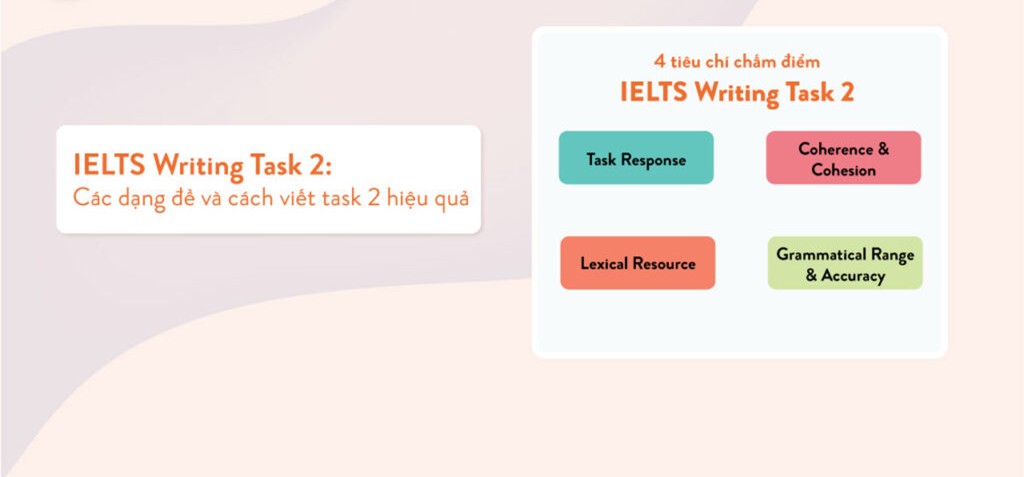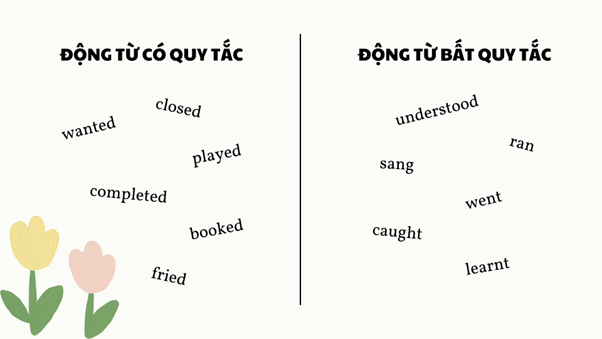Diagram Labelling là dạng bài tương đối phổ biến trong kỳ thi IELTS, đặc biệt trong bài thi IELTS Listening và IELTS Reading. Vậy khi gặp dạng bài này trong bài thi Reading, các thí sinh cần “xử lý” như thế nào?
Giới thiệu dạng bài Diagram Labelling

Dạng bài Diagram Labelling hay còn gọi là Dán nhãn biểu đồ. Ở đề bài này, các thí sinh sẽ được yêu cầu hoàn thành các nhãn trên sơ đồ liên quan tới mô tả được đề cập tới ở văn bản. Sơ đồ có thể thể hiện quá trình phát triển của một hiện tượng thiên nhiên, bản vẽ kỹ thuật hay biểu đồ thiết kế hoặc một kế hoạch.
Đề bài sẽ nêu rõ số lượng từ tối đa trong câu trả lời, ví dụ: ‘NO MORE THAN THREE WORDS AND/OR A NUMBER from the passage’, ‘ONE WORD ONLY’ hay ‘NO MORE THAN TWO WORDS’. Lưu ý rằng, các bạn sẽ mất điểm nếu viết nhiều hơn số từ yêu cầu. Các con số có thể được viết bằng số liệu hoặc chữ và đều được tính là một từ. Các từ được gạch nối được tính là từ đơn.
Đây là dạng bài điền từ vào chỗ trống duy nhất có nội dung câu trả lời trong bài đọc không xuất hiện theo thứ tự câu hỏi. Ví dụ, thông tin chứa câu trả lời cho câu 2 có thể xuất hiện ở câu 5 của đoạn 1 trong bài đọc, còn thông tin chứa câu trả lời cho câu tiếp theo (câu 3) có thể xuất hiện trước đó (câu 4) của đoạn 1.
Mặc dù đoạn đọc của dạng bài này thường chứa nhiều từ vựng chuyên ngành và thuật ngữ lạ, thí sinh không nhất thiết phải hiểu tất cả những từ này để tìm ra câu trả lời chính xác.
Chiến thuật làm bài với 5 bước
Đọc kỹ câu hỏi và yêu cầu về số lượng từ cần điền
Xác định minh cần dán nhãn sơ đồ bằng các từ trong bài đọc hay các từ trong danh sách cho trước. Xác định số từ tối đa được phép điền, ví dụ: ONE WORD (MỘT TỪ) hoặc NO MORE THAN TWO WORDS (KHÔNG QUÁ HAI TỪ.)
- Hiểu tổng quan sơ đồ, xác định loại từ và thông tin cần điền
- Phân tích câu hỏi đề bài
Gạch chân keyword (từ khóa) để định vị thông tin cần tìm
Dự đoán các từ đồng nghĩa, trái nghĩa
- Scan tìm vị trí xuất hiện từ khóa trong đoạn văn, đọc kĩ và đưa ra đáp án
- Đọc, kiểm tra lại
Thực hành
Xét bài đọc được lấy ví dụ ở phần đầu:
Roman tunnels
The Romans, who once controlled areas of Europe, North Africa and Asia Minor, adopted the construction techniques of other civilizations to build tunnels in their territories
The Persians, who lived in present-day Iran, were one of the first civilizations to build tunnels that provided a reliable supply of water to human settlements in dry areas. In the early first millennium BCE, they introduced the qanat method of tunnel construction, which consisted of placing posts over a hill in a straight line, to ensure that the tunnel kept to its route, and then digging vertical shafts down into the ground at regular intervals. Underground, workers removed the earth from between the ends of the shafts, creating a tunnel. The excavated soil was taken up to the surface using the shafts, which also provided ventilation during the work. Once the tunnel was completed, it allowed water to flow from the top of a hillside down towards a canal, which supplied water for human use. Remarkably, some qanats built by the Persians 2,700 years ago are still in use today.
They later passed on their knowledge to the Romans, who also used the qanat method to construct water-supply tunnels for agriculture. Roman qanat tunnels were constructed with vertical shafts dug at intervals of between 30 and 60 meters. The shafts were equipped with handholds and footholds to help those climbing in and out of them and were covered with a wooden or stone lid. To ensure that the shafts were vertical, Romans hung a plumb line from a rod placed across the top of each shaft and made sure that the weight at the end of it hung in the center of the shaft. Plumb lines were also used to measure the depth of the shaft and to determine the slope of the tunnel. The 5.6-kilometer-long Claudius tunnel, built in 41 CE to drain the Fucine Lake in central Italy, had shafts that were up to 122 meters deep, took 11 years to build and involved approximately 30,000 workers.
By the 6th century BCE, a second method of tunnel construction appeared called the counter excavation method, in which the tunnel was constructed from both ends. It was used to cut through high mountains when the qanat method was not a practical alternative. This method required greater planning and advanced knowledge of surveying, mathematics and geometry as both ends of a tunnel had to meet correctly at the center of the mountain. Adjustments to the direction of the tunnel also had to be made whenever builders encountered geological problems or when it deviated from its set path. They constantly checked the tunnel’s advancing direction, for example, by looking back at the light that penetrated through the tunnel mouth, and made corrections whenever necessary. Large deviations could happen, and they could result in one end of the tunnel not being usable. An inscription written on the side of a 428-meter tunnel, built by the Romans as part of the Saldae aqueduct system in modern-day Algeria, describes how the two teams of builders missed each other in the mountain and how the later construction of a lateral link between both corridors corrected the initial error.
The Romans dug tunnels for their roads using the counter-excavation method, whenever they encountered obstacles such as hills or mountains that were too high for roads to pass over. An example is the 37-meter-long, 6-meter-high, Furlo Pass Tunnel built in Italy in 69-79 CE. Remarkably, a modern road still uses this tunnel today. Tunnels were also built for mineral extraction. Miners would locate a mineral vein and then pursue it with shafts and tunnels underground. Traces of such tunnels used to mine gold can still be found at the Dolaucothi mines in Wales. When the sole purpose of a tunnel was mineral extraction, construction required less planning, as the tunnel route was determined by the mineral vein.
Roman tunnel projects were carefully planned and carried out. The length of time it took to construct a tunnel depended on the method being used and the type of rock being excavated. The qanat construction method was usually faster than the counter-excavation method as it was more straightforward. This was because the mountain could be excavated not only from the tunnel mouths but also from shafts. The type of rock could also influence construction times. When the rock was hard, the Romans employed a technique called fire quenching which consisted of heating the rock with fire, and then suddenly cooling it with cold water so that it would crack. Progress through hard rock could be very slow, and it was not uncommon for tunnels to take years, if not decades, to be built. Construction marks left on a Roman tunnel in Bologna show that the rate of advance through solid rock was 30 centimeters per day. In contrast, the rate of advance of the Claudius tunnel can be calculated at 1.4 meters per day. Most tunnels had inscriptions showing the names of patrons who ordered construction and sometimes the name of the architect. For example, the 1.4-kilometer Cevlik tunnel in Turkey, built to divert the floodwater threatening the harbor of the ancient city of Seleucia Pieria, had inscriptions on the entrance, still visible today, that also indicate that the tunnel was started in 69 CE and was completed in 81 CE.
Yêu cầu đề bài:

B1: Xác định số từ cần điền
“ONE WORD ONLY” → Chỉ được phép điền duy nhất một từ
B2: Xác định loại từ và thông tin cần điền
- Từ cần điền số 1 là một danh từ chỉ vật được thể hiện trên hình bởi các đường thẳng đứng “để định hướng đường hầm
- Từ cần điền số 2 là một danh từ chỉ nơi nước chảy tới và được sử dụng bởi người dân địa phương
- Từ cần điền số 3 là một danh từ chỉ một mục đích khác của “vertical shafts” ngoài việc loại bỏ phần đất
B3: Gạch chân keywords để định vị thông tin tốt hơn

B4: Scan tìm vị trí xuất hiện từ khóa trong đoạn văn, đọc kỹ và đưa ra đáp án
| 1. ………… to direct the tunneling
ĐÁP ÁN: posts |
[Đoạn 1]
… they introduced the qanat method of tunnel construction, which consisted of placing posts over a hill in a straight line, to ensure that the tunnel kept to its route … |
| 2. water runs into a ……….. used by local people
ĐÁP ÁN: canal |
[Đoạn 1]
….. it allowed water to flow from the top of a hillside down towards a canal, which supplied water for human use. |
| 3. vertical shafts to remove earth and for ….
ĐÁP ÁN: ventilation |
[Đoạn 1]
The excavated soil was taken up to the surface using the shafts, which also provided ventilation during the work. |
Bước 5: Kiểm tra lại
Điền đáp án, và kiểm tra liệu đáp án có hợp lý hay không, nếu không hợp lý thí sinh cần xem lại, nếu hợp lý, chuyển sang câu tiếp theo.
Lời kết
Như vậy, Envis đã giúp các bạn hiểu hơn về cách xử lý khi gặp dạng bài Diagram Labelling trong IELTS Reading cũng như thực hành dạng bài này. Ngoài ra các bạn cũng có thể tham khảo chiến thuật làm các dạng bài IELTS khác trên websites của Envis. Chúc các bạn học tập tốt!













